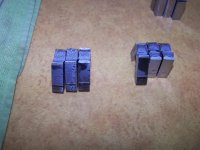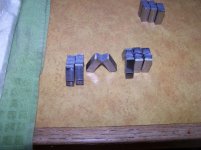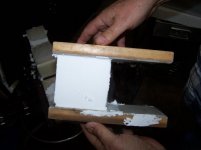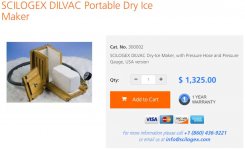JHOLLAND1
Titanium
- Joined
- Oct 8, 2005
- Location
- western washington state
125 years ago Professor Georges Charpy standardized metallic specimen testing
10 x 10 x 55 mm mini-bars referred to as coupons--are submitted to
swing hammer impact
today I dropped by local test lab performing cryogenic Charpy testing
designated temp -40 deg C
to achieve this the lab discharged bottled co2 into expansion chamber which in
two minutes produced cube of solid co2
shavings from this block were placed into denatured alcohol to lower temp of alcohol bath to -40
9 Charpy specimens were allowed to soak followed by rapid extraction and swing fracture
energy was recorded in lb-feet and joules
fracture force varied from 21 to 100 lb-ft of these 9 coupons
video
YouTube
10 x 10 x 55 mm mini-bars referred to as coupons--are submitted to
swing hammer impact
today I dropped by local test lab performing cryogenic Charpy testing
designated temp -40 deg C
to achieve this the lab discharged bottled co2 into expansion chamber which in
two minutes produced cube of solid co2
shavings from this block were placed into denatured alcohol to lower temp of alcohol bath to -40
9 Charpy specimens were allowed to soak followed by rapid extraction and swing fracture
energy was recorded in lb-feet and joules
fracture force varied from 21 to 100 lb-ft of these 9 coupons
video
YouTube












